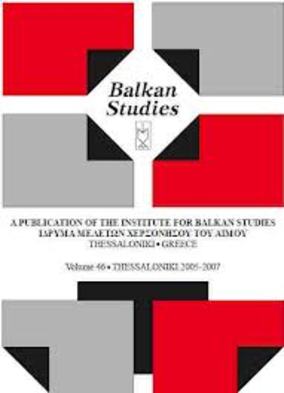Thessaloniki, Andalusia and the golden horde
Part of : Balkan studies : biannual publication of the Institute for Balkan Studies ; Vol.26, No.2, 1985, pages 299-320
Issue:
Pages:
299-320
Section Title:
Articles
Author:
Abstract:
During the 14th century Thessaloniki experienced its artistic and intellectualGolden Age. It is to this period that a number of important religiousfoundations have been credited to. Amongst these is the the Vlattadon Monastery,attributed by Xyngopoulos to the second quarter of the 14th centuryand by Theocharidis to the third quarter of the 14th. Recent restoration workhas revealed a more complex history, where at least two building phases canbe discerned. A late 14th century building period and an earlier one, whilethe dendrochronological investigations in the church’s timber showed thatthe earliest wood dates from 1304.Decorating the southern facade of the church of this monastic establishmentare three fragmentary ceramic bowls, attributed by Xyngopoulos to13th century Iran.The purpose of this article is to re-examine the origin of these “bacini”and establish their date. This examination might further elucidate the dateof the monument but also permit us to understand the role of Thessalonikias a commercial and intellectual center during the turbulent 14th century,that saw the weakening of the Byzantine Empire and the revival of Orthodoxy.
Subject:
Subject (LC):
Notes:
Το άρθρο περιέχει εικόνες και βιβλιογραφία.




